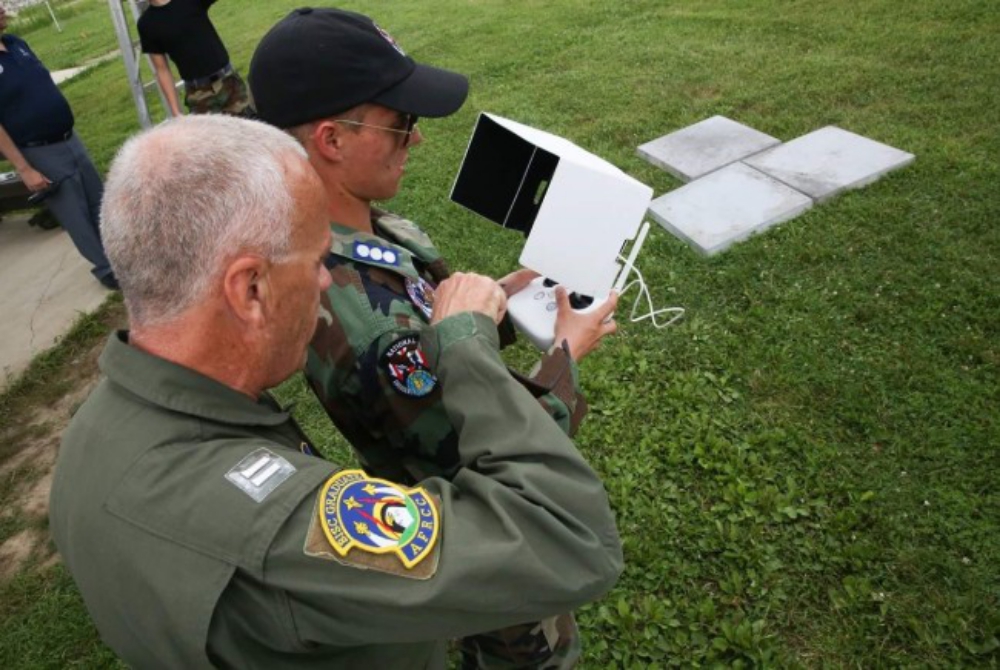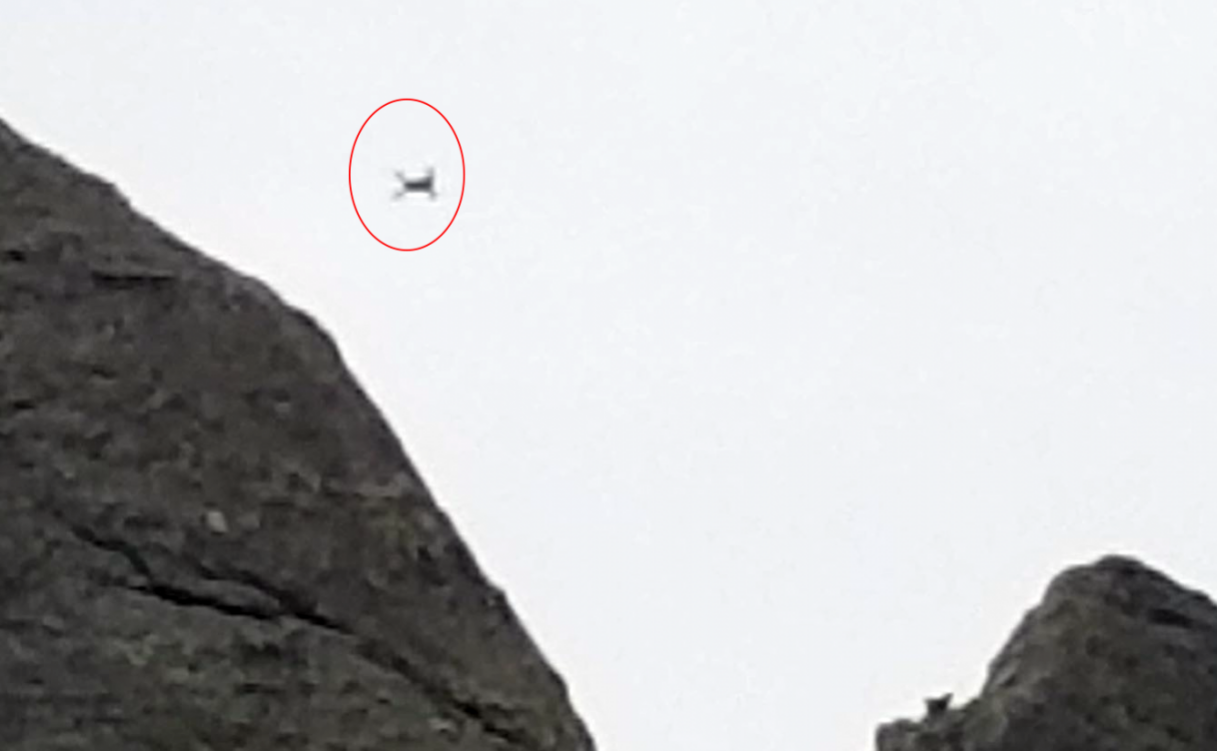
Capt. John Webber (l) of Civil Air Patrol’s Indiana Wing provides instruction to Cadet Capt. Linus McFarland at CAP’s National Emergency Services Academy
Civil Air Patrol’s first two searches using small Unmanned Aerial Systems (sUAS) are in the books after a pair of South Dakota Wing missions.
The wing began deploying drones with a missing-person search in Custer State Park in Custer County, on the state’s western border, after a 22-year-old South Dakota School of Mines and Technology was last seen at his Rapid City residence, where he mentioned he was going out for a hike. When his family reported him missing, Civil Air Patrol was called to assist.
The wing responded in its usual fashion. Members were contacted and asked to help. CAP aircrews were deployed and aided in the search. The wing coordinated with local authorities, ready to assist in any way it could.
The man was found dead Sept. 25, the victim of an apparent fall.
In the meantime, the South Dakota Wing had taken a new approach to the search, using new tools and new techniques.
The search marked the first time CAP used drones in a corporate search and rescue mission.

A South Dakota Wing-deployed drone makes a pass during the search for the missing college student in Custer County
For some time, the wing has made sUAS a priority, joining a growing trend. Nationwide, over 1 million sUAS units have been registered with the Federal Aviation Administration. More than 100,000 Americans have obtained an FAA Part 107 license for sUAS.
Last spring, the South Dakota Legislature approved a one-time appropriation to acquire several sUAS units to use in search-and-rescue efforts. Trained wing members have developed techniques for pattern searches and detecting targets t oblique angles and in challenging areas.
The Custer County mission “proved many of the concepts and procedures we’ve developed,” Austin Worcester, CAP’s national sUAS program manager, told wing officials. “You performed this mission precisely as it should have been … so I commend you and your team!”
The second such mission began Oct. 2 in neighboring Pennington County after a 66-year-old hunter with diabetes and congestive heart failure was reported missing. His nephew had dropped him off to drive game down a draw, but the hunter never arrived at a designated pickup spot.
The man is still missing.
When he was last seen, the weather was clear and temperatures were in the low 50s. In the interim, though, lows fell below 18 and light snow with accumulation occurred – conditions the hunter wasn’t dressed for.
Ground searches involving CAP members yielded no discoveries. Meanwhile, Pennington County Search and Rescue requested CAP sUAS photo flights over the search area.
SUAS flights conducted all four days generated more than 2,500 photos, which search and rescue agency officials and CAP members reviewed for signs of the missing man.
Source: Press Release

A fact left from the article is that the missing 22-year old was not found by a drone. Tree cover in the area is dense and the individual was found by personnel on the ground.